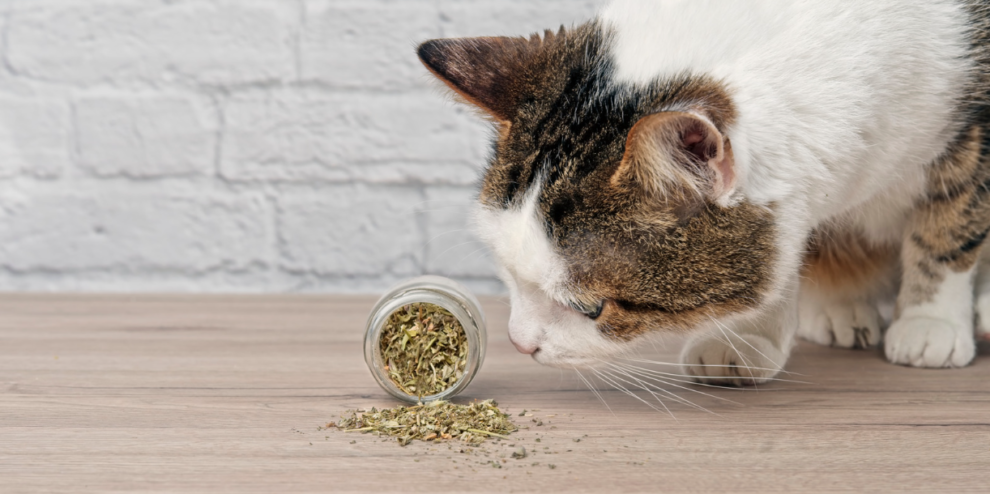Catnip, also known as Nepeta cataria or "catnip," is a magical plant known for its special attraction to cats; why cats get so excited by catnip and how to use it safely, you'll find out here.
1. What is catnip?
Catnip (Nepeta) is a versatile and low-maintenance plant belonging to the lipflower family (Lamiaceae) belongs; this herbaceous perennial is popular in both ornamental gardens and households with cats and is known for its decorative value, insect repellent properties and playful effect on cats.
Catnip has gray-green leaves and clusters of small, tubular flowers in purple, blue, white or pink; it blooms from late spring to early fall, grows best in a sunny spot with well-drained soil, tolerates drought well and attracts bees and butterflies, making it an ecologically valuable choice.

2. What does catnip do to the cat?
If your indoor cat needs some extra stimulation, this can be a good way of enrichment are; when a cat smells catnip, nepetalactone binds to receptors in the nose and sends signals to the brain, which can produce a temporary euphoric response, but not all cats respond - about 70-80% are sensitive, and genetics come into play.
- Fragrance: Smelling usually has a stimulating effect.
- Intake: food often has a calming effect.
3. Can a cat get "high" from catnip?
The behavior sometimes resembles a high, but the effect is temporary and biological; after 10-15 minutes, interest wanes and cats are less sensitive for several hours, with no risk of addiction.

4. The benefits of catnip
Catnip is more than just entertainment and can help in a variety of situations.
- Encourage play behavior: Activates lazy or bored cats.
- Reduce stress: can help with anxiety, such as during travel Or a vet visit.
- Training support: Motivates use of the scratching post instead of furniture.
5. Safe use of catnip
Follow these guidelines for safe use:
- Small quantities: too much can cause stomach upset; use in moderation and not daily by default.
- Supervision: See how your cat reacts, especially on first use.
- Alternatives: If your cat doesn't respond, try valerian or matatabi.
6. How do I use catnip?
Catnip is available as loose leaves, spray or in toys; this way you put it to versatile use.
- Toys: Sprinkle some catnip on toys for added attraction.
- Scratch posts: sprinkle the scratching post to reward desired behavior.
- DIY: Make a small bag of dried catnip.
- Garden: Plant catnip so your cat can enjoy it right away.
- Recipes: add a little to pet-friendly cookies or festive mocktails.

7. Catnip and people
Catnip also has mild effects in humans; as a tea, it is calming and traditionally used for stress, mild insomnia and digestive complaints, although the effects are much more subtle than in cats.
Conclusion
Catnip is a safe, fun way to excite and enrich your cat - if in moderation and mindful of your pet's reaction; in addition, if you want to arrange care during a trip or busy period, start today with a cat sitter at home for peace and continuity.









